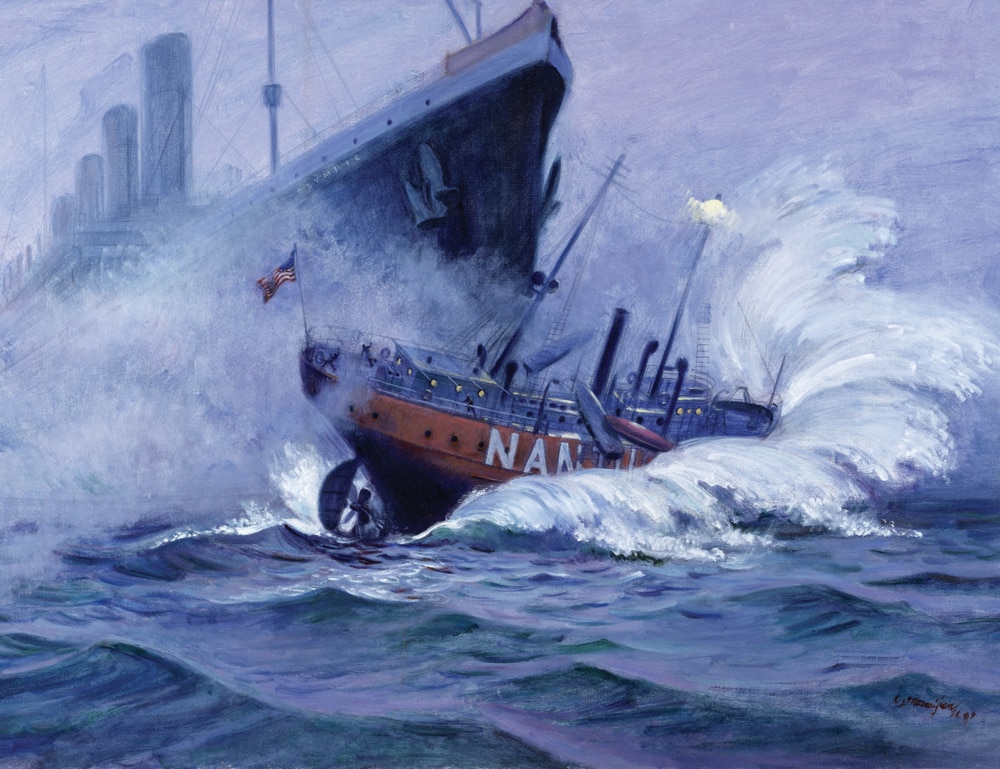
The cardinal rule of navigation is that two boats should never occupy the same coordinates. Even if you’re an experienced skipper, that doesn’t mean the other guy is. Whether in the harbor or offshore, you must be constantly alert to avoid a collision. Fortunately, there are a number of useful safety tools at your disposal, including ones you might already own.
Radar
A marine radar lets you set an invisible guard zone around your boat at a set distance. Any object picked up inside it will sound an alarm to announce its presence. A radar’s electronic bearing line (ELB) and variable range marker (VRM) can help you keep tabs on a nearby vessel. ELB provides relative bearing to a target. VRM determines its exact distance. Tip: Line up the ELB on a target headed toward you. Should it keep crawling down the ELB line toward the center of the screen, you need to take evasive action.
AIS
Automatic Identification System (AIS) places a triangle icon on a dedicated screen, or right on most current chart-plotter displays, when an AIS-equipped vessel is in your area. This reveals the exact position, speed, heading and much more, and can predict whether a boat or ship broadcasting AIS information will become a potential threat. This is a great tool for understanding commercial traffic, and for staying out of harm’s way when boating near large commercial vessels that might not see you and can’t stop in time.
Hailers
Hailers are overlooked as anti-collision devices. They are essential for alerting and communicating with a nearby vessel to convey navigation intentions. A hailer’s foghorn function broadcasts your presence to all vessels in the vicinity in poor visibility. The listen feature helps you hear the sound of nearby craft and buoys, as well as warning you of waves breaking on shore to keep you from running aground at night. Look for a hail or public address feature on your VHF. Usually all you need to do is to mount a hailer or PA speaker on deck.
Night Vision
There are two types of night-vision technologies: 1) scopes that take a small amount of background light, even starlight, and multiply that light source thousands of times to illuminate objects otherwise hidden in the darkness, and 2) thermal night-vision cameras, which can have the unique ability to depict the very slight temperature differences all objects have and display them in a recognizable detailed picture. Both types, when viewed, are like turning the lights on at night and can help you see with your eyes.
The U.S. Coast Guard is asking all boat owners and operators to help reduce fatalities, injuries, property damage, and associated healthcare costs related to recreational boating accidents by taking personal responsibility for their own safety and the safety of their passengers. Essential steps include: wearing a life jacket at all times and requiring passengers to do the same; never boating under the influence (BUI); successfully completing a boating safety course; and getting a Vessel Safety Check (VSC) annually from local U.S. Coast Guard Auxiliary, United States Power Squadrons(r), or your state boating agency’s Vessel Examiners. The U.S. Coast Guard reminds all boaters to “Boat Responsibly!” For more tips on boating safety, visit www.uscgboating.org.








